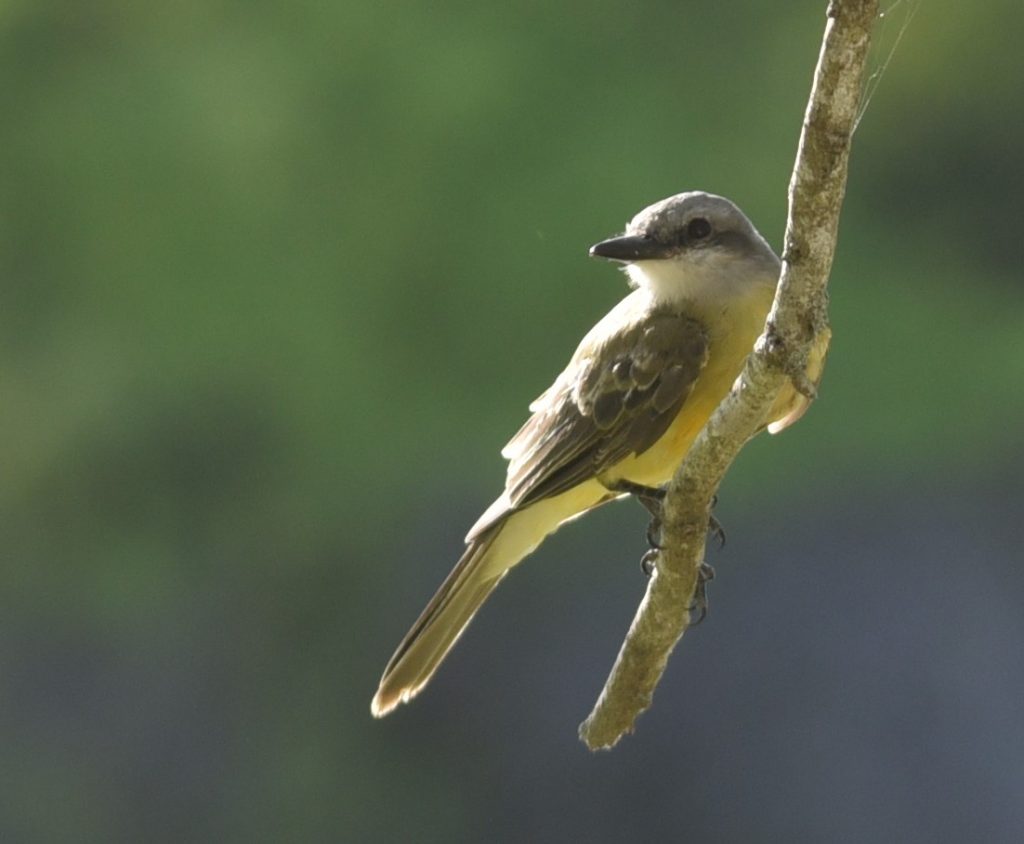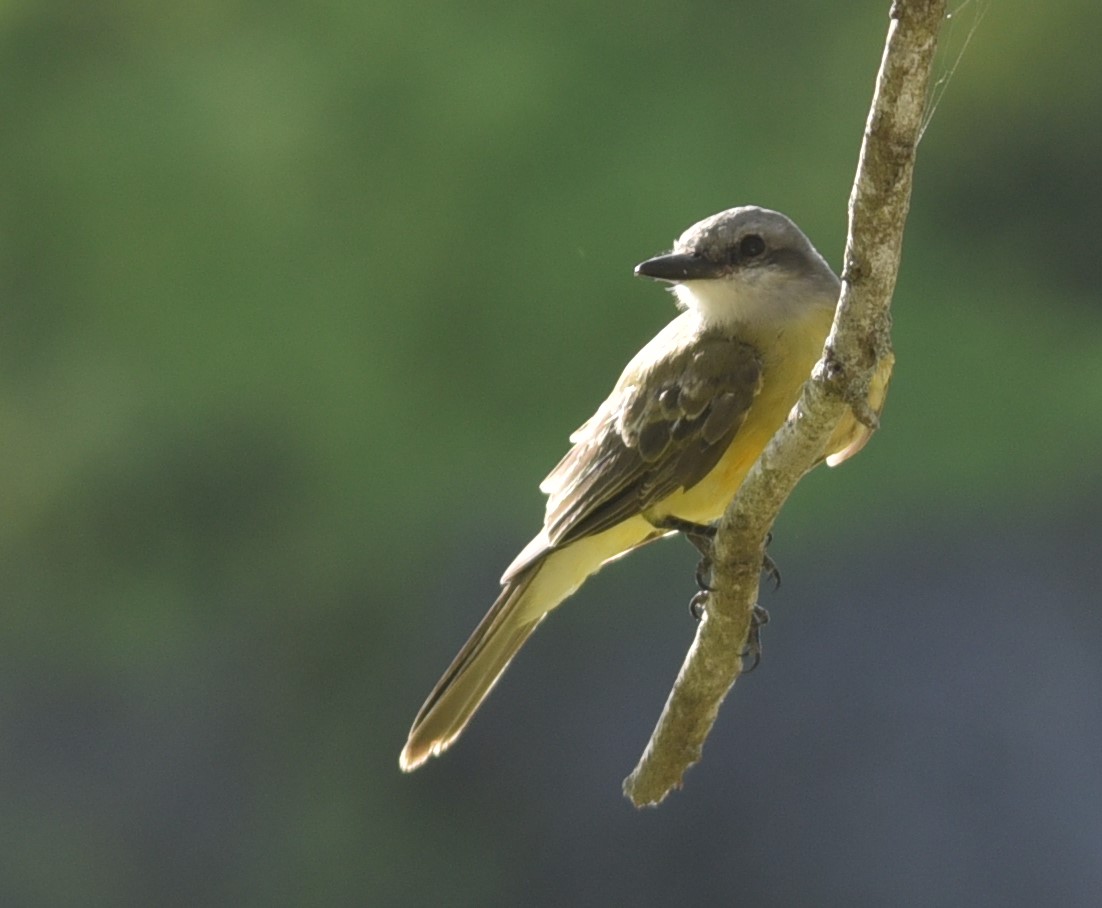Flashes of yellow dart through the branches of a honey mesquite tree outside my kitchen window in the late afternoon. They’re Couch’s Kingbird (Tyrannus couchii) and I think there’s one or two adults and possibly four young from this year’s brood.
These birds are a permanent resident in the very tip of Texas. We’ve had two or three adults for as long as we’ve had the house. Their morning habit is to sit on the utility wire near the garage. I’ve called, “good morning” to them for years; they ignore me. They fly from the wire, snag insects midair, then perch in the tall reaches of an old avocado tree. Before the freeze of winter 2021, when the tree was full of leaves, they nested at the very top.
This year, their late afternoon routine is to hang out in the mesquite tree, putting on a show for us as we prepare dinner and posing long enough for photos through the window between short sashays to grasp bugs.

Couch’s Kingbird has bright lemon-yellow underparts, gray head with a darker gray ear patch and brown wings and back. They are very similar to the Tropical Kingbird, whose range is similar. Couch’s usually have a longer wing, a shorter, wider and deeper bill than the Tropical Kingbird, a shallower notch in the tail and an olive-green cast at the scapular feathers. These variations are difficult to tell in the field without comparing the two species. Mostly, birders make the distinction from the bird’s call; Couch’s is mostly a short repeated pshuwer – try to pronounce that out loud and you’ll get it. It’s something of a phishing sound. Couch’s Kingbird eyeing insects
Couch’s and Tropical Kingbirds live side by side in eastern Mexico without interbreeding. Couch’s Kingbird is mostly a Mexican species with a range north into Texas, from the mid Texas coast and Tamaulipas south along eastern Mexico into the entire Yucatan Peninsula, including Belize and northern Guatemala. Many remain in south Texas year-round.
They prefer lightly wooded habitats of thorn forest, wooded stream edges and into the suburbs. Couch’s Kingbirds eat flying insects that they capture in flight. They dash from a tree perch to take prey then return to the perch to consume it. They can hover to take insects from vegetation or from the ground. Their diet includes large insects like beetles, grasshoppers, wasps and large flies. They will eat small fruits of coma, anacua, brasil, possum grape and chinaberry.
A group of kingbirds, such as our evening exhibition would collectively be known as a coronation, court or tyranny of kingbirds, although I wonder if a collective noun would apply to a family unit?


Leave a Reply